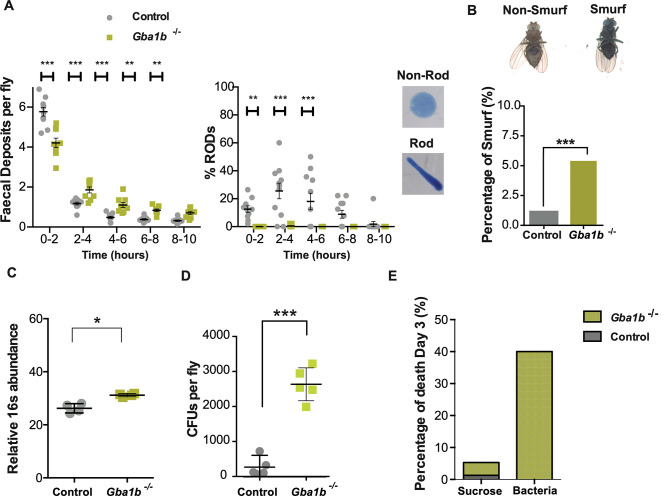Fig 3. Gba1b-/- flies show reduced intestinal transit and an altered gut microbiome.
(A) The rate of intestinal transit is decreased in 3-week-old Gba1b-/- flies compared to controls as assessed by the number of faecal deposits over time (***p< 0.0001 and ** p< 0.01). Gba1b-/- flies produce almost exclusively non-ROD faecal deposits (***p< 0.0001 and ** p< 0.01). Two-way ANOVA followed by Fisher’s LSD multiple comparison test. Data are presented as mean ± SEM. (B) Assessment of gut permeability using a Smurf assay reveals that there is an increase in the number of Smurf flies among aged Gba1b-/- flies (28 days-old) compared to controls, suggesting increased gut wall permeability (Gba1b-/- vs control, ***p = 0.0002;). X2 (chi-squared) tests with Yates’ correction. (C) Quantitative PCR-based 16S rRNA gene abundance is significantly higher in the guts of Gba1b-/- flies than in controls (*p = 0.0286). Mann-Whitney test; data are presented as mean ± SD, n = 4 per genotype. (D) CFUs are significantly increased in the guts of 3-week-old Gba1b-/- flies compared to age-matched controls (p<0.001). Unpaired t-test; results are presented as mean ± SD, n = 5 per genotype). (E) Oral infection with Lactobacillus plantarum results in increased mortality among Gba1b-/- flies but not in control flies.

